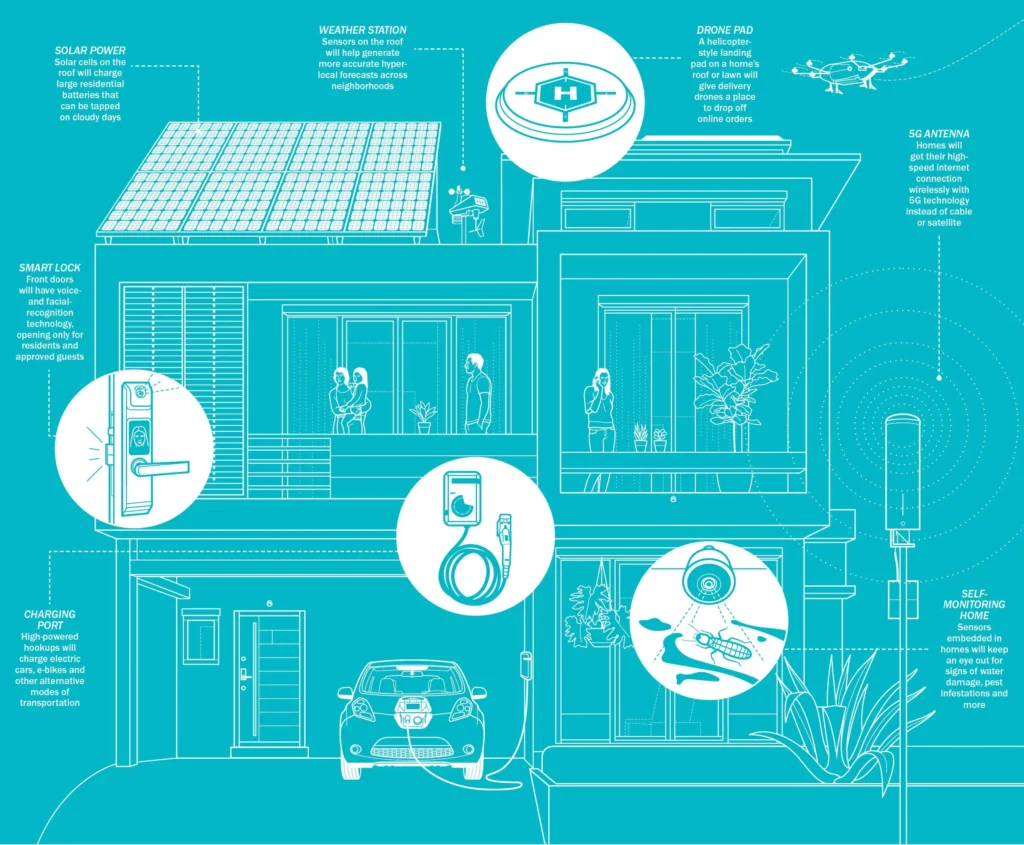The Evolution of Smart Homes: What’s New in 2024? Smart homes have come a long way in recent years, and in 2024, they are more advanced than ever. From voice-controlled devices to integrated security systems, smart homes are revolutionizing the way we live. With the rise of artificial intelligence and the Internet of Things, the possibilities for smart home technology are endless. In 2024, homeowners can expect to see even more seamless integration, improved energy efficiency, and enhanced connectivity in their smart home systems.
In the realm of futuristic residences, the developments in smart home technology have been nothing short of remarkable. The Evolution of Smart Homes: What’s New in 2024? showcases cutting-edge innovations such as augmented reality interfaces, biometric security measures, and personalized health monitoring systems. These advancements are reshaping the way we interact with our living spaces, offering unparalleled convenience and peace of mind. As smart home technology continues to evolve, it’s clear that the possibilities for customization and efficiency are boundless.
The Rise of Artificial Intelligence in Smart Homes
In 2024, the use of artificial intelligence (AI) in smart homes has become more advanced and widespread than ever before. AI-powered virtual assistants, such as Amazon’s Alexa, Google Assistant, and Apple’s Siri, have become the central control hub for various smart devices within the home. These virtual assistants can now understand and respond to natural language commands, making it easier for homeowners to interact with their smart devices.
Furthermore, AI has enabled smart home systems to learn and adapt to the daily routines and preferences of the homeowners. For example, AI algorithms can now automatically adjust the thermostat based on the homeowner’s habits, optimize energy usage, and even anticipate their needs by proactively suggesting actions. This level of personalization and automation has made smart homes more intuitive and efficient than ever before.
Integration of 5G Technology in Smart Homes
2024 has seen a significant integration of 5G technology in smart homes, revolutionizing the way devices connect and communicate with each other. The high-speed, low-latency capabilities of 5G have enabled seamless connectivity between a wide range of smart devices, from security cameras and door locks to kitchen appliances and entertainment systems.
With 5G, smart homes can now support a larger number of connected devices without compromising network performance. This has paved the way for the proliferation of smart home ecosystems, where different devices can work together synergistically to enhance the overall living experience. Additionally, the low latency of 5G has improved the responsiveness of smart home devices, making real-time interactions and remote monitoring more reliable than ever.
Enhanced Home Security and Privacy Features
In 2024, smart home security systems have evolved to offer enhanced features that prioritize both security and privacy. Advanced biometric authentication methods, such as facial recognition and voice recognition, have become more prevalent, adding an extra layer of security to access control systems within smart homes.
Moreover, privacy-focused features, such as camera and microphone shutters, encrypted data transmission, and comprehensive user permission settings, have been integrated into smart home devices to address concerns about data privacy and security. Homeowners now have more control over how their personal data is collected, stored, and shared within the smart home ecosystem, giving them greater peace of mind.
Sustainability and Energy Efficiency in Smart Homes
With a growing emphasis on sustainability, smart homes in 2024 have made significant strides in energy efficiency and environmental consciousness. Smart thermostats, lighting systems, and appliances are now equipped with advanced energy monitoring and management capabilities, allowing homeowners to optimize their energy usage and reduce their carbon footprint.
Furthermore, smart homes have integrated renewable energy sources, such as solar panels and wind turbines, into their energy systems, enabling homeowners to generate their own clean energy and contribute to a more sustainable future. The combination of smart technology and eco-friendly practices has made it easier for homeowners to embrace sustainable living without sacrificing comfort or convenience.
Health and Wellness Monitoring Through Smart Home Devices
In 2024, smart home devices have increasingly focused on health and wellness monitoring, providing homeowners with valuable insights into their well-being. Advanced smart health devices, including smart scales, blood pressure monitors, and sleep trackers, have become integrated into the smart home ecosystem, allowing individuals to track and manage their health metrics seamlessly.
Moreover, smart homes now feature environmental sensors that can monitor air quality, temperature, and humidity levels, creating a healthier indoor environment for the occupants. These insights can help homeowners make informed decisions to improve their overall health and well-being, turning the smart home into a proactive tool for promoting a healthier lifestyle.
Customization and Personalization of Smart Home Experiences
2024 has brought a new era of customization and personalization to smart home experiences, allowing homeowners to tailor their living spaces to their unique preferences and needs. Smart home systems now offer intuitive interfaces that enable users to create custom routines, settings, and automation sequences that align with their lifestyle.
Additionally, the integration of AI and machine learning algorithms has empowered smart home devices to learn from the behaviors and preferences of the homeowners, automatically adjusting settings and suggesting personalized recommendations to enhance comfort and convenience. This level of customization has elevated the smart home experience to a more individualized and adaptive level, catering to the diverse needs of modern households.
Expansion of Voice and Gesture Control Capabilities
In 2024, the expansion of voice and gesture control capabilities has transformed the way homeowners interact with their smart devices. Voice recognition technology has become more accurate and responsive, allowing users to control a wide range of devices, from lights and thermostats to entertainment systems, using natural language commands.
Furthermore, gesture control technology, leveraging advanced sensors and cameras, has enabled touchless interaction with smart home devices. This hands-free approach has proven particularly useful in scenarios where users’ hands may be occupied, such as when cooking in the kitchen or carrying groceries into the home. The seamless integration of voice and gesture control has made smart homes more accessible and user-friendly for individuals of all ages and abilities.
Smart Home as a Hub for Integrated Services
2024 has witnessed the smart home evolving into a central hub for integrated services, offering seamless connectivity and control over various aspects of daily life. Smart home systems now facilitate integration with external services, such as grocery delivery, home maintenance, and healthcare, creating a more streamlined and interconnected living experience.
For example, homeowners can now use their smart home devices to place grocery orders, schedule home repairs, and even connect with healthcare providers for virtual consultations, all within the smart home interface. This convergence of services has redefined the concept of a smart home, positioning it as a multifunctional platform that extends beyond traditional automation and connectivity, enriching the lives of its occupants in diverse ways.
| Feature | Description |
|---|---|
| AI Integration | Smart homes now feature advanced AI systems that can learn and adapt to the habits and preferences of the residents. |
| Energy Efficiency | New smart home devices are designed to optimize energy usage, reducing environmental impact and lowering utility bills. |
| Health Monitoring | Smart homes can now monitor the health and well-being of the residents, providing alerts for any abnormalities. |
| Security Enhancements | Advanced security features include facial recognition, biometric access control, and real-time monitoring for enhanced protection. |
| Integration with Wearable Devices | Smart homes can sync with wearable devices to provide a seamless experience both inside and outside the home. |
The Evolution of Smart Homes: What’s New in 2024? Smart homes in 2024 have evolved to include advanced AI integration, energy efficiency, health monitoring, security enhancements, and integration with wearable devices. These new features have made smart homes more intuitive, secure, and seamlessly integrated with the lifestyles of their residents.



